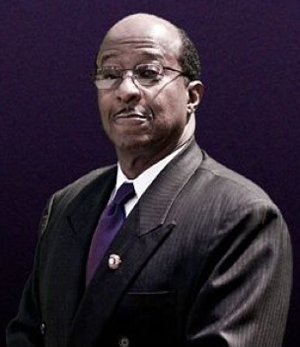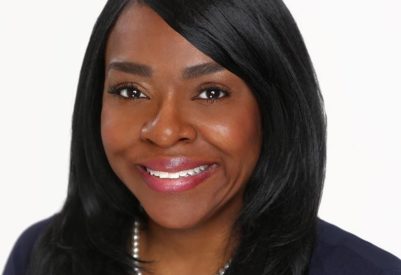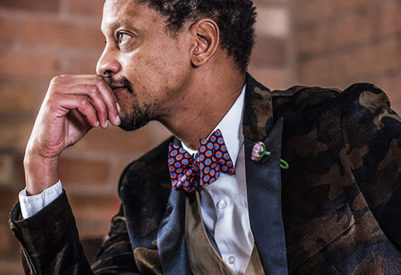
Born in Mississippi, grew up in New Orleans, after graduating from college, Dr. Ray made his way to Rochester, during the early 1960s.
"I came to Rochester because there were some forward-thinking people at that time that included Dr. Bobby Joe Saucer, Aleen Rush, and William Young,” Dr. Ray said. “They happen to be here in Rochester working on a special initiative called the Southern Student Teaching program.
Basically, what it entailed was recruiting young college graduates from HBCUs in the south.
They made the southern college graduates an offer that if they agree to come to the city of Rochester and to at least commit three-years into the public school system, the district will pay for their tuitions for graduate school to become certified teachers, because many of them who came were not teachers.
“We were liberal arts majors and specialists in various disciplines,” Dr. Ray said. “They wanted to run a program to see if a person who does not have a background in education, could really change education? We were a part of that.”
The recruits enrolled in several local collegiate institutions in order to get a certification in Education such as Geneseo, Brockport and the University of Rochester.
“That portion of the program was very successful,” Dr. Ray said. “Then we were placed in schools throughout the city of Rochester.
“Some of the names that the community might be familiar with are James Perkins, Kenneth Barnes, Patsy Barnes, Joe Bivins, Iris Banister, Stanley Parks, James Bless Thomas, and Marilyn Parks,” Dr. Ray emphasized. “But that is just naming a few, because it was a plethora of us from the HBCUs. We flooded the city school zones with personnel who came from an HBCU and the results were phenomenal,” he said.
The HBCUs recruits were placed at schools that were at the bottom portion of Rochester education like School # 4 and James Madison. Academically, after five years, those schools rose up into the top ten.
“I was the third black person to be placed at James Madison,” Dr. Ray said. “When we got there, things were not good. The school was plagued with gang activity. The community is probably familiar with the street gangs that roamed all around Genesee Street, at that time. You could not have an event at Madison unless a fight broke out. So, Maurice Bell and myself. Rosa Bell, James Bless Thomas, Norman Lacking, Alberta Hudson, Juanita Ballad, Jenny Washington and I can run through all the names. We were placed in that school to turn it around,” Dr. Ray said. “And they brought in Principal Johnny Wilson, a graduate of a HBCU, Grambling University.”
“I lived in a little place on West Avenue,” Dr. Ray continued. “Once we assessed the situation, we invited Principal Wilson over. All the black teachers were there. We said to Mr. Wilson, we will never get this school in order unless we can get change in the environment, because you cannot educate kids in an environment like this,” he said. “We promised him that we would not embarrass him and will not break the law but we needed to have some lead way to change what is going on at Madison. And in a short answer he said “Go ahead and run the school- (Dr. Ray laughs).”
“And true to form, we did not disappoint,” Dr. Ray said.
After a year of us working collectively in that school, Principal Wilson was honored “Man of the Year” by the Women Network for helping turn around that school.
“And I give him all the credit because he had faith and trust in us that we will keep our word and we did,” Dr. Ray pointed out. “And from that came a lot of positive things. Education returned to Madison in a big way.”
For example, they were only twenty-seven students throughout the whole city of Rochester who qualified for the National Honor Society in 1986. Eighteen of those twenty-seven were at Madison.
Dr. Ray strongly emphasized that, one thing they knew is that you cannot teach kids, if you cannot get their attention.
Many of the black recruits still had connections to their HBCUs alma maters down south. So they knew the importance of having a band, as an essential part of the curriculum.
“So, a friend of mine was involved in music down south and they were coming through this way not to Rochester but they were in a zone near here,” Dr. Ray said. “I asked, could they stop in Rochester for a moment and do a quick demonstration. He said, my brother, it’s too much to bring the entire band there but because it is you, he could probably bring the rhythm section but you guys got to come up with something like gas money and food. So, we raised the money and they came and showed out,” Dr. Ray recalled. “The band started on Plymouth Avenue, before turning down Jefferson Avenue and people came out from everywhere. They poured out on the street. Everyone was like, what is going on? Where did this come from? What is happening? So, after we did that,” he pointed out. “The parents came together and said we got to get a band. So, we started fundraising for a band. I knew going in saying just let’s get academic going was not going to work,” he exclaimed. “You first have to get the kids attention.”
“One thing about music is that it is a universal language," he continued. "Once you can direct that universal language to an end to get where you want to go, you can move the process along. And that is what we did. We started fundraising. At first, many in the school system say it would never work. Many had given up on the kids at Madison. But I grew up in the projects in New Orleans and I knew how to change things,” he said.
At the time the school district said if they could raise the money for a band at Madison, they would give them a music teacher because they believed they could not do it. However, they underestimated the black teachers fund-raising abilities and they also did not expect the black teachers at Madison to have the black business community behind their efforts.
“But one particular fundraising opportunity I pursued from a local white automobile dealer requesting that he donate a car to help our cause,” Dr. Ray said. “The dealer replied, he does not give cars away, we sell cars. I had done my research knowing before I came to his office that he has donated cars to nonprofits at other schools. So, as I was about to leave his office, I said to the dealer, right down the street is Eastman Kodak and March is coming and I know that is bonus time. A lot of my parents. The parents of my students buy cars from you. They walk in here with a Kodak badge and they walk out with a car and you do not get the first payment until bonus time. Suppose all these black kids showed up in front of your place with signs saying you are unfair. You would not support them like you support other schools.,” Dr. Ray recalled. “He turned red and said I am not talking to you; I will talk to the principal of your school. It took all that but we got the car,” he said.
"We got so good at holding fundraising events we created a credit union for the kids. A lot of the kids had part-time jobs. They will borrow twenty-five or thirty dollars for whatever reason and the kids always paid it back. We were teaching them the mechanics and importance of a credit union."
When everything was going right for the kids at Madison on all levels, the district decided to cut the budget and Principal Wilson was placed in a position where it was impossible to have enough money to buy supplies necessary for student learning that would last through the year.
Because of Dr. Ray’s and his colleagues' fundraising efforts, they were able to produce the money needed. But to make matters worse, shortly after an administrator came to his classroom and said he got bad news for him.
“You got to lose that band,” the administrator said.
Dr. Ray asked why?
The administrator replied that the superintendent is getting complaints from other principals of not having a band and now they want the district to get them a band and we cannot afford it.
Dr. Ray replied, the district did not give them the money for the band, they raised the money, independently.
The last word was the administrator setting a deadline telling Dr. Ray, after the month of May, you got to get rid of the band.
“I refused,” Dr. Ray said. “I am not going to do it.”
That spring, he got a transfer notice from the school along with ten other black staff members.
All of the black teachers from HBCUs got transferred out.
The students erupted.
They conducted a walk-out and threatened to block traffic in front of the district's Central Office.
When the district got a wind of it. They sent someone to speak with the students. At the meeting the district official, what some said swears to God and promised no one will be transferred.
When school was out for the summer break and resumed thereafter, they were all transferred and scattered over the district, despite the district’s promise to retain the black teachers at Madison.
“They intentionally broke up the concentration that turned that school around,” Dr. Ray said. “We had our arms around the situation. Through Madison as the model, we were changing the entire environment throughout the district when it comes to education. So, people wonder and pondered, why would the district do that?
At the original Madison there is a common lounge area that consists of an inner room and outer room.
“I was in the inner room and no one knew I was there,” Dr. Ray recalled. “A group of teachers were conversating in the outer room lounge. I heard the conversation and it was very disparaging saying, we as black teachers who came from the south, education was not as good and we should not have been given jobs there and should go back down south.”
“I walked out of the lounge and the silence consumed the room when they saw it was me,” he continued. “I said to the staff assembled there that I had overheard their conversation. But let me share this with you. You had every advantage in the world. Here I am. I have a master degree. I am teaching at the same salary, you are making and you had a 350 years head start on me, so what do that say about you? And I walk out the lounge,” he recalled.
The rest of the day and weeks they were profuse about telling me they did not mean it. And I said no problem, I just wanted to share that little history with you. And I never followed up. We never got into anything else with that because I knew what the issue was.
“We tried to fight it in court but they were able to outlast us," Dr. Ray said. "So, all the transfers stuck."
Shortly after they were transferred from Madison, a student shot a sentry in the school and also a student attempted to set the school on fire.
“A lot of things began to happen when we were transferred,” Dr. Ray acknowledged. “What we had built up all went down the drain again.”
Also he believe what else has killed education in Rochester until this day is there is the belief that black kids always need fixing. And because of this belief, all the federal funding is based on ‘can’t do kids.’
“You show me a kid that cannot do something, I will give you a grant,” Dr. Ray said. “And the moment you get the kids so they can do something, you lose the grant. They put the school system on a 360 degrees path. You can never get out of this.”
“The programs that come into the district, they come in for two to three years and then that grant is gone. You got to apply for another grant. The problem is that the grant never matches up. The next grant you write has nothing to do with the first grant. So, what happens is that the kids end up in silos. And you put them in these silos in order to get the federal money. And in order to get the federal money, you have to keep putting these kids in silos,” he continued. “So, kids are always in a silo. I said to board members that they have to start looking at what is going on here. As long as you keep these kids in silos and as long as you have to rely on funds and grants coming in that have no measure of the last grant that was written, the kids are going to be constantly going around in circles. At the time, the average kid went through three or four initiatives before they got to high school. And then they wonder why they drop out. They know when you are going around in circles. They saw this movie before.”
“We saw the potential in kids. And one thing you will find out about students is that once they believe in you, they will perform and do whatever you ask them to do,” Dr. Ray continued. “And this is what we do not have. Kids know, when you are fooling around and just wasting time. They know, when you are not sincere. They know, when the bell rings, the automatic starts on the cars have it warmed up for teachers, who can’t wait to get out of there. They beat the buses out of the parking lot.”
Dr. Ray recalled, U.S. Senator Chuck Schumer was here in Rochester and he directed a comment to him, telling the senator, if he really wants to change the outcome towards what happens in education in Rochester, he should stop sending ‘can’t do money to Rochester.
“I said to the senator, we need ‘safe harness’ money. If you are going to give money to get the kids up, you have to keep the money flowing to keep them up and not pull the rug from up under them. Because if you continue to do that, you will never get anywhere with what you are doing,” Dr. Ray said.
Rochester depends heavily on outside money. Rochester’s taxpayer’s base is not sufficient to run the school system alone. So, the city receives a lot of money from grants and government entities.
“And if you do not have a synergy in those grants you cannot control outcomes,” Dr. Ray said.
As assistant principal, he went on to co-open the first Science, Technology, Engineering, and Medicine (Stem) school in the city district, that had a consistent 98 percent attendance and routinely sent their kids abroad to compete against the world’s best.
“And what happened? Dr. Ray said. “The district closed the school. And he was transferred to work in the superintendent’s cabinet.”
In that capacity, he came up with the Children’s Home, modeled after a program in NYC originated by Geoffrey Canada.
“I never met this person before, who was a philanthropist, who reviewed a project I had developed to help the city's youth and he became excited and decided to donate 50,000 dollars towards the program,” Dr. Ray recalled. “I turned the funds over to the district and my team began to prepare plans. But before we could introduce what we thought what should be done with the funds, my team's participation in the project was terminated and removed. The project was awarded to someone else, once we had stood it up and got it started. So, there is a history of that kind of behavior in the district,” Dr. Ray pointed out.
People build something up and then they will insert someone else to take it over.
In Rochester for a long time, it is what I called ‘The Guru’ effect in education. They were people who were touted as these are the people who can lead you or whatever have you, he said.
In one of the meetings, I got in trouble with the superintendent, because I asked the question. Who among all these people making this presentation has made state assessments? He said why is that important? I said they are attempting to teach us how to get state assessments and no one presenting to us has ever made it. To me that is like a naked man selling you a suit. I was absolutely sick of this. It is a clown show. And that kind of stuff was going on all the time. In the city school district, if you think outside the box, they tell you to get back in the box.
“My first years in the RCSD, my mentor warned me that, in the city school district, you are only as good as they want you to be. If they want you to be good, you are really good. If they do not want you to be good, not so much. Because the system makes it so.”
Unlike how Dr. Ray arrived in Rochester, today the district proclaim they can’t find black teachers to recruit.
At one time, I requested the district recruit some more of us here.,” Dr. Ray recalled. “The personnel said, we’ve sent people out and we cannot find anybody.”
“When this district wants to get bilingual teachers they go to Puerto Rico,” he questioned. “Why?”
“Because that is where the bilingual people are,” he noted. “I looked at the recruiting schedule and saw the recruiters went to Oswego, NY. It amazed me, they went to Oswego looking for black teachers,” he quipped. “They are not there. They are where we came from that includes states such as Alabama, Georgia, and Louisiana. Black students from those states went to colleges such as Southern, Grambling and Tennessee State University. That is where they are. They are not in Oswego, going up towards the Canadian border. You are going to come back empty handed every time because they are not there. But they are recruiting bilingual people because they go where they are,” he said.
Today, I believe they do not intend to recruit black teachers, because the experimental program initiative to bring black teachers from the south that included myself was extremely successful.
"In my time black teachers would ask, why is it that other schools can have all the essential building blocks which comprise a good school environment that includes good academics, good athletics and access to common fields of arts; especially music? He noted. “But when it comes to the city, they say no we cannot have all three, because it is most important that we focus on ELA and Math, but they are not doing either. They do not have people who understand that it is an amalgamation of all of those things together constitutes a school and make a city what it is. And we have not had people with the vision that understands, how you put a school together? How do you get a community involved with school? Just, like those parents that came together to raise the money to make sure we had a band, I spoke of earlier. Once we showed them what they had to do, they did it. They came through for us. They were out there on Saturday and Sunday selling raffle tickets, holding stuff at their homes, talking to businesses. They did all that to get their kids going and they did it well. They say black parents do not care about their kids. Oh! yes, they do. Black parents care about their kids like everybody else."
Dr. Ray is a recipient of 'The 2020 Trailblazer Award' for his lifetime efforts in education.
Dr. Ray achieved academic distinction by winning bronze and silver medals in statewide competitions while graduating in the top 20 in a class of 395. His post-secondary education includes a Bachelors Degree in Economics, three Masters Degrees and a PhD. He has demonstrated a life-long commitment to learning through his study and internship at 13 colleges and Universities that include Yale, American University, Loyola, Wisconsin, University of Ghana (West Africa) and the University of California.
Dr. Ray had the privilege of being selected as a Foreign Affairs Scholar in the Department of State and a Presidential Fellow in the United States Congress - Washington, DC. His professional experiences include work in Industry, Education, Community and Government Service.
Article by: Author and Journalist Rodney Brown, executive director of Brown Publishing LLC and Southwest Tribune Newspaper.





